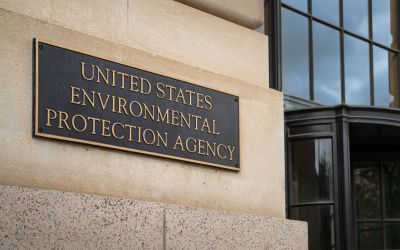Maintaining the Paris Momentum
Janos Pasztor, Senior Advisor to the UN Secretary-General on Climate Change, celebrates the uniqueness of the Paris Agreement, but warns that swift action is necessary if the temperature goals are not to be missed.
The importance of the 2015 UN Conference on Climate Change in Paris and the resulting Paris Agreement cannot be sufficiently underscored. It was a tremendous success in that it showed that multilateral action under a United Nations framework can deliver results. At least four specific success areas need to be highlighted.
Firstly, Paris was a political success that surpassed all expectations. On the first day of the conference 150 heads of state and government leaders came together, all under one roof, on one day – a historical record – and they all spoke of the importance of climate change and the urgency for action; and they instructed their negotiators to negotiate an ambitious agreement. These leaders did not negotiate the agreement themselves, but they gave strong political guidance at the appropriate time. Moreover, by the beginning of the meeting, some 188 Parties had also deposited their initial Nationally Determined Contributions (NDCs), or bottom up national climate change plans. This itself was a big success, showing that all countries were serious about undertaking climate action.
Secondly, the Paris Agreement has a clear vision about the direction the world needs to go. It agreed on a very ambitious goal to keep global temperature rise to well below 2°C, and if possible consider keeping it below 1.5°C above historical average. This temperature goal was then combined with the objective to reach a balance between global emissions and sinks of greenhouse gases in the second half of this century – in other words to reach a net zero emissions scenario at the global level. The goals together provide a clear signal to investors, technology developers, insurance companies, as well as various other non-state actors about the low carbon, low emissions era that the world has agreed to in Paris. The direction of travel has become clear.
Thirdly, the Agreement has a series of legally binding provisions on countries having to take action on mitigation, adaptation, provision of financial resources, and on participating in a transparent reporting and monitoring framework.
Fourthly, the Paris Agreement was a success not only because of the full participation of governments in the final agreement, but also because of the tremendous active participation of representatives of the non-state sector, especially through the ‘Action Agenda’, where they demonstrated what they were already doing on climate action, and what else they were prepared to do in the future.
Towards the future
The political momentum of the Paris Agreement continued in 2016. The UN Secretary-General, together with other leaders, encouraged countries to speed up their formal signature of the agreement (the intention to ratify), and then to speedily undertake domestic processes of different kinds to formally ratify the agreement. These efforts have paid off. The double trigger of reaching 55 ratifications and 55 per cent of global emissions to be covered by those countries ratifying necessary for the entry into force of the Paris Agreement was reached in October, and 30 days thereafter, on 4 November the Agreement has formally entered into force. This means that COP22 in Marrakech in November 2016 is also the first meeting of the Parties to the Paris Agreement.
The speed at which the Paris Agreement has entered into force is unprecedented, and indeed unique for a treaty of this importance. The original Framework Convention (the UNFCCC) took three years to enter into force, while the Kyoto Protocol took eight years! So the rapid entry into force demonstrates political will by a large number of countries to continue the momentum of the Paris Agreement, so that implementation can start as soon as possible.
One of the unique features of the Paris Agreement is that while it is a legally binding requirement for Parties to present and implement national climate plans (NDCs), the content – that is, the ambition level of the mitigation, adaptation and financing efforts – is up to the country to decide (the reason why these plans are called ‘nationally determined’ contributions). So the real success of the Paris Agreement will start if leaders, together with their relevant ministers, ensure at the domestic level that the NDCs are supported by appropriate legislation, so that proposals in the initial NDCs can be fully implemented. This will require that leaders engage all sectors, and many different state and non-state actors at the domestic level to reach the objectives included in the nationally determined climate change plans.
Managing the temperature
But we also know that the overall ambition level of the 188 NDCs presented in Paris is not enough. Studies indicate that if the NDCs are all implemented 100 per cent, the global temperature increase will be approximately between 2.7 to 3.1°C. While this is much better than the business as usual 4-6°C, it is clearly not enough. And it does assume 100 per cent implementation, which is not going to be easy – in part because many countries included actions in their NDCs that will happen only on condition of the availability of the necessary financial resources. Moreover, the NDCs cover the period up to 2030, and the assumptions about what happens afterwards are unclear. Many experts suggest that present NDCs are exploiting the easy, ‘low hanging fruit’ options, and even if we initially manage to keep the temperature rise on a path to the 2.7-3.1 degree range, maintaining those levels beyond 2030 will be increasingly challenging.
And let us not forget that the goal agreed in Paris is to keep temperature rise to well below 2°C and if possible to 1.5°. Technically it is possible to meet those goals. However, from a social and political standpoint, the window allowing us to reach them is closing rapidly. Many experts indicate the increasing likelihood of overshooting these temperature goals – at this point it is not yet clear by how many degrees, and for how many decades. The environmental, social and economic impacts of overshoot are likely to be significant, and therefore the Parties to the Paris Agreement need to do all they can to increase ambition now, because the longer they wait the more difficult and expensive it will be.
Even if ambition is increased and implemented, the chances of some overshoot beyond the 1.5/2°C goals are real. More significantly, if the international community is to manage global climate change in a responsible manner, it is imperative that not only the ideal (100 per cent implementation of NDCs) but indeed a broader range of risk management scenarios be considered and planned for. This would imply that in addition to maximum levels of mitigation ambition, as well as considerable adaptation efforts, the international community must also consider techniques of carbon dioxide removal from the atmosphere (or negative emissions) and possibly even other climate geoengineering techniques as possible complementary options.
For real success of the Paris Agreement, the political momentum generated at Paris and subsequently through the process of entry onto force of the Agreement must be maintained and transferred to the domestic level to encourage implementation and to increase levels of ambition as soon as possible. We can achieve the ambitious objectives of the Agreement, but this will not happen by itself. Continued political pressure from leaders, combined with sustained innovation and taking up of the essence of the Paris Agreement by the private sector and other non-state actors, will be essential.
Actions, not ratifications
The real success of the Paris Agreement will not be measured according to the number of countries that ratify, or the date of entry into force. Rather, success will be about what Parties to the Agreement actually do in terms of reducing their emissions; adapting to climate changes that are already with us; providing the necessary financial resources to those in need; and of course participation in the reporting and monitoring mechanism so that the world will be informed about what countries are doing.
Read the full Climate Action 2016/17 Publication here








